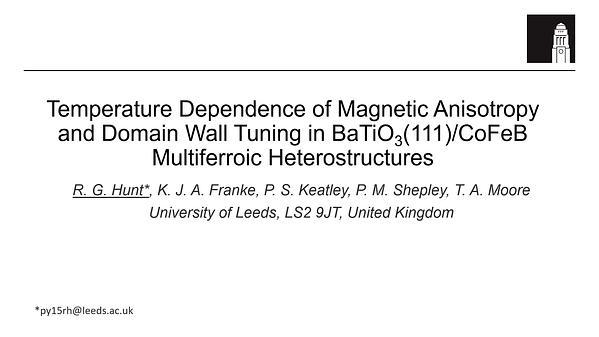Would you like to see your presentation here, made available to a global audience of researchers?
Add your own presentation or have us affordably record your next conference.
Low dimensional molecular magnets are considered to be one of the best materials for cryogenic magnetocaloric effect (MCE) 1,2. The magnitudes of magnetic entropy change for the most efficient molecular materials are comparable to that of the famous gadolinium gallium garnet (Gd3Ga5O12). Although much research effort is focused on searching high efficient compounds for conventional MCE, a new type of magnetocaloric effect, namely rotating magnetocaloric effect (RMCE), has been introduced. In RMCE, the applied magnetic field is constant and the aligned material (often in single crystal form) with significant magnetic anisotropy is being rotated. Cooling with rotation has several advantages compared to the conventional MCE cooling setups: high efficiency (high frequency cooling cycles), simple construction and low power consumption ( possibility of using permanent magnets). In our research we have investigated the RMCE in 2D compounds (based on MnII-NbIV 3 and CuII-WV 4 ions) and clusters (based on TbIII and DyIII 5). We have noticed that the inverse magnetocaloric effect can be used to enhance RMCE (in our case up to 51 % for the 2D compounds). In the case of the Tb cluster, with large uniaxial anisotropy, the magnetic entropy change for conventional and rotating MCE is comparable, showing significant values (ΔSmax ≈ 4 J K-1 kg-1) at 2.0 K in low field (μ0H ≈ 1.2 T), which can be achieved with permanent magnets.
